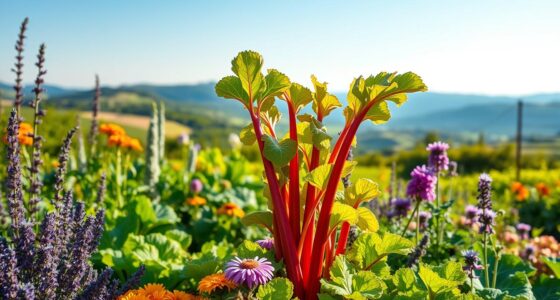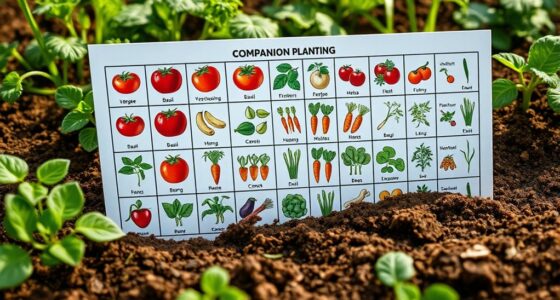There’s something truly special about watching your garden thrive, isn’t there? The anticipation as seedlings poke their heads through the soil, the richness of colors as vegetables mature—these moments can fill your heart with joy. If you’ve ever grown beets, you know that these vibrant roots can be both rewarding and challenging. But what if I told you that the companionships you cultivate in your garden could greatly enhance your beet harvest? In this article, we’ll delve into the world of beets companion plants, revealing the best companion plants for beets and the organic companion planting for beets that can boost growth, deter pests, and improve your soil health. Let’s explore together!
Key Takeaways
- Understanding the importance of companion planting with beets can lead to richer yields.
- The right partnerships can help deter pests and enhance soil health.
- Choosing the best companion plants for beets is essential for thriving gardens.
- Organic companion planting for beets creates a harmonious garden ecosystem.
- Each companion plant offers unique benefits that support beet growth.
Understanding Beets and Their Needs
Growing beets successfully requires an understanding of their unique characteristics and specific needs. As a root vegetable, beets are not only celebrated for their vibrant color but also for their earthy sweetness and health benefits. Each of these elements plays a role in ensuring that you cultivate a thriving beet garden.
What Makes Beets Unique?
Beets (Beta vulgaris) stand out due to their resilience and adaptability. Their unique characteristics include a rich nutrient profile that provides essential vitamins and minerals. They thrive in cooler climates, making them an excellent choice for spring and fall planting. Understanding these factors will enhance your beets companion planting guide, ensuring that other plants complement their growth rather than hinder it.
Soil Requirements for Beets
To meet the soil requirements for beets, you should aim for well-draining, loamy soil enriched with organic matter like compost. Beets flourish best in soil pH levels between 6.0 to 7.0, which promotes essential nutrient availability. Providing these conditions creates an ideal environment for, thus ensuring robust beet growth and flavor quality.
Sunlight and Water Needs
Beets require a good amount of sunlight and consistent moisture to grow effectively. Aim for about six hours of full sun daily to promote healthy shoots and roots. Managing the sunlight and water requirements for beets is crucial; keep the soil evenly moist but avoid overwatering. This balance is essential during germination and the initial growth stages.
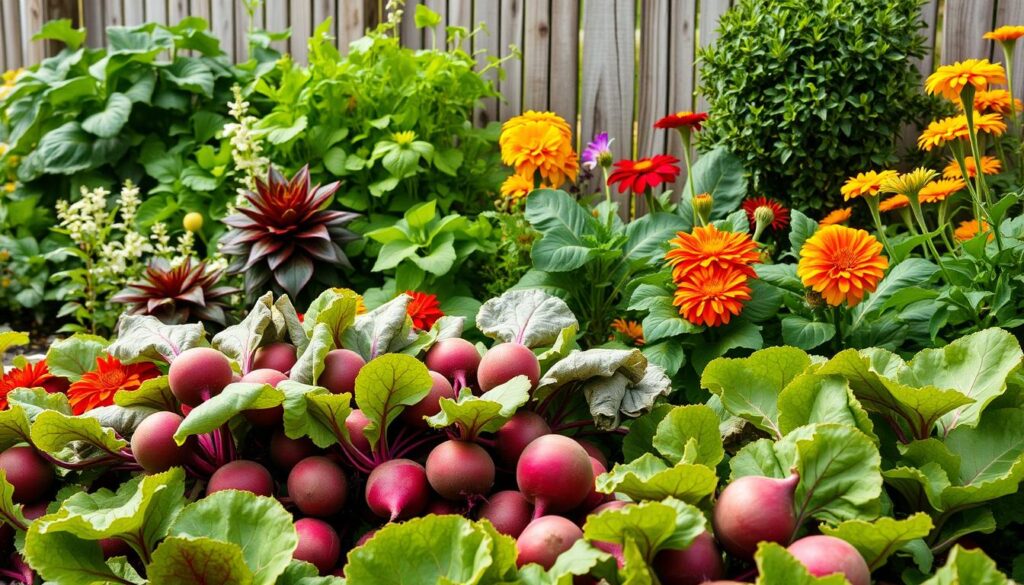
The Importance of Companion Planting
Companion planting plays a significant role in sustaining healthy gardens. Understanding the benefits of companion planting can enhance your gardening experience and lead to an improved garden yield. When you plant compatible species together, the effects multiply, creating a harmonious environment where plants thrive. This practice often results in healthier plants, increased production, and reductions in pest infestations.
Benefits for Your Garden
Utilizing the benefits of companion planting helps in various ways:
- Nutrient uptake enhancement: Certain plants can improve soil quality, making nutrients more available for beets.
- Pest control: Some companions repel pests that commonly affect beets.
- Biodiversity promotion: Different species can improve overall garden health.
How Companion Plants Interact with Beets
The companion plant interaction can significantly elevate beet growth. For instance, pairing beets with onions or garlic creates a shield against pests. These plants emit natural compounds that deter harmful insects, offering a protective barrier around your beet crop. Understanding the best companion plants for beets means selecting those that will not only cohabit but actively support each other’s growth.

Best Companion Plants for Beets
Choosing the right companions for your beets is essential for maximizing growth and health. Various plants can thrive alongside beets, offering benefits ranging from nutrient enhancement to pest deterrence. Incorporate these companion plants to create a flourishing garden.
Carrots: A Perfect Pair
Beet and carrot companions work well together since both thrive under similar conditions. When growing carrots with beets, the carrots’ deep roots help break up the soil, allowing beets to establish a robust root system. This synergy leads to healthier plants and higher yields.
Onions: Strong Allies
Onions as beet companions provide excellent benefits. These two crops flourish without competing for nutrients or space, making onion and beet planting a smart choice for your garden. Onions’ pungent aroma can help deter pests, protecting beets from threats such as aphids.
Lettuce: A Complementary Choice
Lettuce and beets make a fantastic pairing. When utilizing companion planting, lettuce thrives in cooler temperatures and has shallow roots that do not compete with the deeper roots of beets. This dynamic allows both crops to flourish, contributing to a diverse and productive garden.
Garlic: Natural Pest Control
Adding garlic and beets to your garden can create an effective barrier against pests. The strong scent of garlic acts as a deterrent, making pests like aphids and cutworms think twice before approaching your beet plants. Consider planting garlic alongside beets for an enhanced level of pest control with garlic.
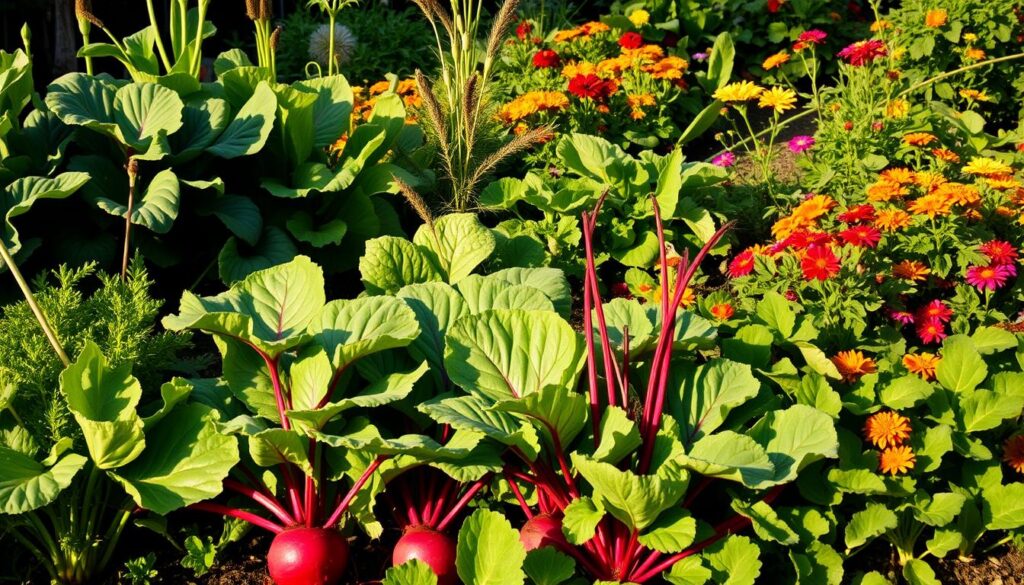
Plants to Avoid Near Beets
Cultivating beets can be a rewarding experience, but certain companion plants can create challenges. Identifying detrimental companion plants is essential for maintaining a healthy garden. Some plants compete for resources or attract pests that harm beets, which can significantly disrupt their growth and yield.
Why Avoid Certain Companions?
Incompatible plants for beets can interfere with their development. When choosing companions, consider how their growth habits and nutrient requirements align with those of beets. For optimal results, it’s crucial to avoid plants that negatively impact beet growth and health.
Dill: A Detrimental Partner
One of the primary plants to avoid with beets is dill. The dill and beet interaction can inhibit beet growth, primarily because dill attracts pests that are harmful to beets. To ensure a thriving beet garden, you should avoid dill with beets.
Pole Beans: Conflicting Needs
Pole beans can present their own set of challenges when planted near beets. These legumes have extensive nutrient and water needs, which might compete with those of beets. Moreover, pole beans can overshadow beets and limit their sunlight exposure. For these reasons, it’s wise to consider the presence of pole beans and beets in proximity to each other.
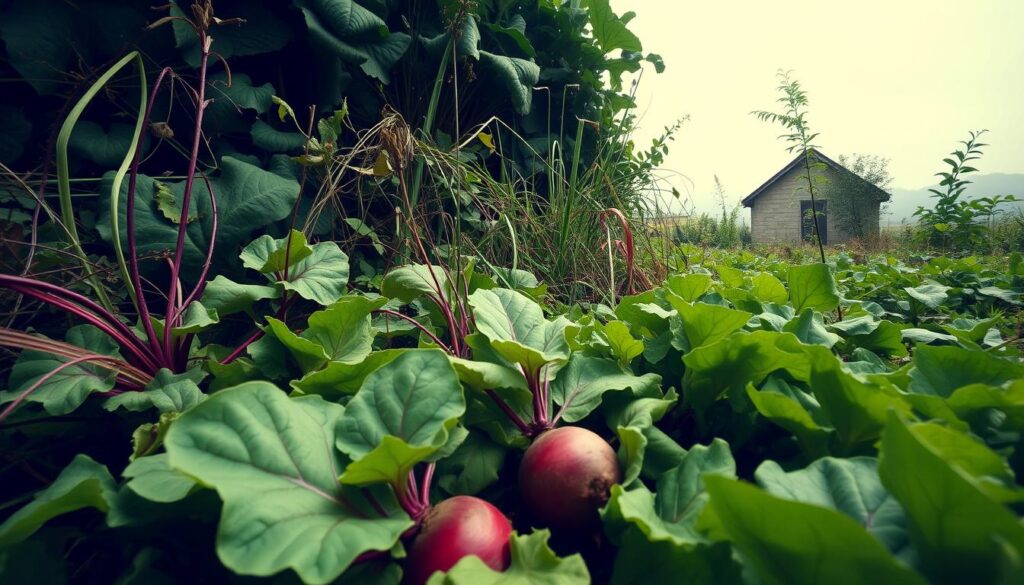
Enhancing Soil Health with Companions
Integrating specific companion plants into your beet garden can significantly contribute to enriching and maintaining a healthy soil environment. Incorporating nitrogen-fixing plants for beets not only helps restore nutrient levels but also supports the overall vitality of your garden. Furthermore, including deep-rooted plants enhances the soil’s physical structure, promoting better growth conditions for your beets.
Nitrogen Fixers: Supporting Beets
Nitrogen-fixing plants such as bush beans play a vital role in enriching the soil where beets grow. These plants naturally restore nitrogen, an essential nutrient that beets thrive on. As nitrogen levels improve, your beet plants benefit from a nutrient-rich environment, contributing to healthier growth and higher yields.
Deep-Rooted Plants: Breaking Up Soil
Deep-rooted plants for soil health serve another important function in your beet garden. Their roots break up compacted soil, enhancing overall soil structure. This aeration promotes improved water infiltration and nutrient distribution, benefiting not just the deep-rooted plants but also your beets by creating a more conducive growing environment.

Pest Control and Companion Planting
Pest control via companion planting can significantly improve the health of your beet garden. By integrating certain plants, you can create a natural defense system against harmful insects. This method not only enhances growth but also promotes a healthier ecosystem in your garden.
How Companions Deter Pests
Companion plants play a crucial role in deterring pests in beet gardens. Their unique scents and properties can naturally repel unwanted insects, reducing the need for chemical interventions. For example, aromatic herbs like mint and catnip release strong fragrances that are unappealing to pests such as aphids and flea beetles. Utilizing these effective deterrents helps ensure that your beets thrive without the stress of infestations.
Best Pest-Repelling Plants for Beets
Incorporating specific plants alongside your beets can bolster your pest control strategy. Here is a list of some of the best pest-repelling plants for beets:
- Mint: Known for its robust aroma, mint effectively repels aphids and other pests.
- Catnip: This herb not only attracts beneficial insects but also deters harmful ones.
- Marigolds: Their bright flowers emit compounds that repel nematodes and aphids.
- Garlic: A strong natural deterrent, garlic can keep many pests at bay.
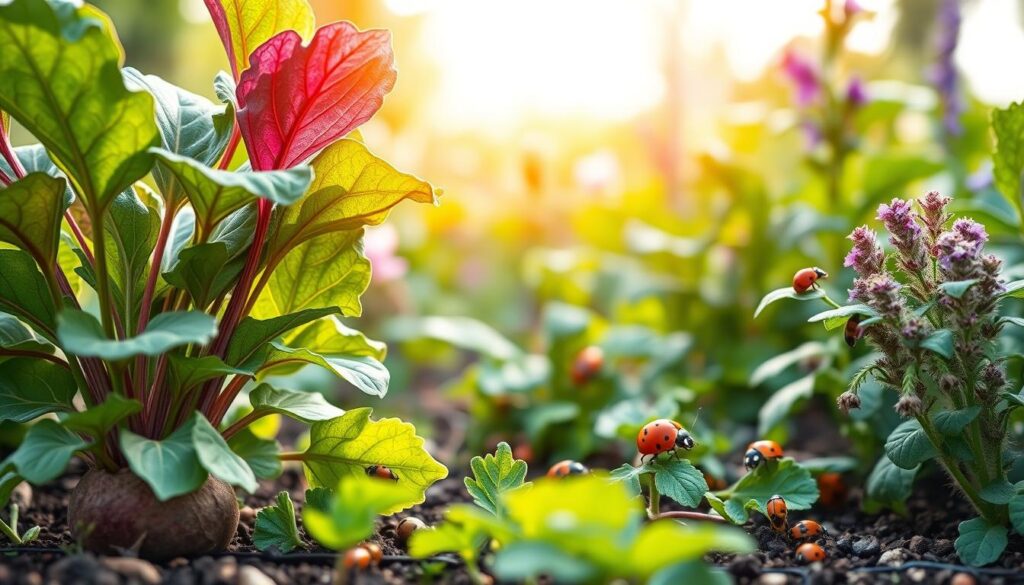
By thoughtfully selecting these plants for your garden, you will create a harmonious environment that wards off pests while encouraging healthy beet growth. Combining these strategies will enhance the overall productivity and vitality of your garden.
Attracting Pollinators and Beneficial Insects
Creating a thriving beet garden involves more than just planting seeds and watering them. Incorporating flowers into your garden contributes to attracting beneficial insects that promote ecological health. Pollinator-friendly plants for beets, like marigolds and borage, play a crucial role in enhancing your garden’s biodiversity. These plants not only provide nectar and pollen for pollinators but also help maintain a balance in the local ecosystem.
Flowers That Help Beets Thrive
Choosing the right flowers can significantly impact the health of your beets. Consider adding the following pollinator-friendly plants:
- Marigolds: Known for their vibrant colors, they attract various beneficial insects.
- Borage: This plant attracts bees and improves soil health.
- Alyssum: A great companion that entices hoverflies, known for their pest control capabilities.
- Nasturtiums: Acting as a trap crop, they can deter aphids away from your beets.
Building Biodiversity in Your Garden
Integrating a mix of flowers and plants supports biodiversity in gardening. A diverse garden reduces pest prevalence, fostering a more resilient ecosystem. More plants mean more habitats for beneficial insects, enhancing natural pest control through companion planting for ecological health. Each flower contributes to a vibrant system that ensures the longevity of your beet crop.

| Flower | Benefits | Insect Attraction |
|---|---|---|
| Marigolds | Pest deterrent, attractive blooms | Bees, butterflies |
| Borage | Soil enhancer, attracts pollinators | Bees, hoverflies |
| Alyssum | Promotes beneficial insects, ground cover | Hoverflies, predatory wasps |
| Nasturtiums | Trap crop, edible flowers | Aphid predators |
Timing Your Planting with Companion Plants
Understanding the timing for companion planting is essential for maximizing your garden’s potential. Beets thrive when planted at the right time, and aligning their growth cycles with compatible companions can lead to a more fruitful harvest. The planting schedule for beets emphasizes optimal planting times during cooler weather in early spring or fall. Following these seasonal gardening tips can help you create a successful garden layout.
When to Plant Beets and Their Companions
To ensure the best results, consider the specific needs of both beets and their companion plants. The timing for companion planting works best when you align their growth periods. For example, carrots and onions make excellent partners with beets and can often share the same planting window. You can refer to local gardening calendars to help determine when to plant these combinations for the best success.
Seasonal Considerations for Optimal Growth
Different plants flourish at various times throughout the year. By observing seasonal patterns, you can adapt your planting schedule for beets and enhance growth rates. For instance, cool-season crops like beets benefit from early planting, while warm-season companions may require different schedules. Adjusting your planting times according to the seasonal gardening tips allows you to maximize your garden’s yield and health.
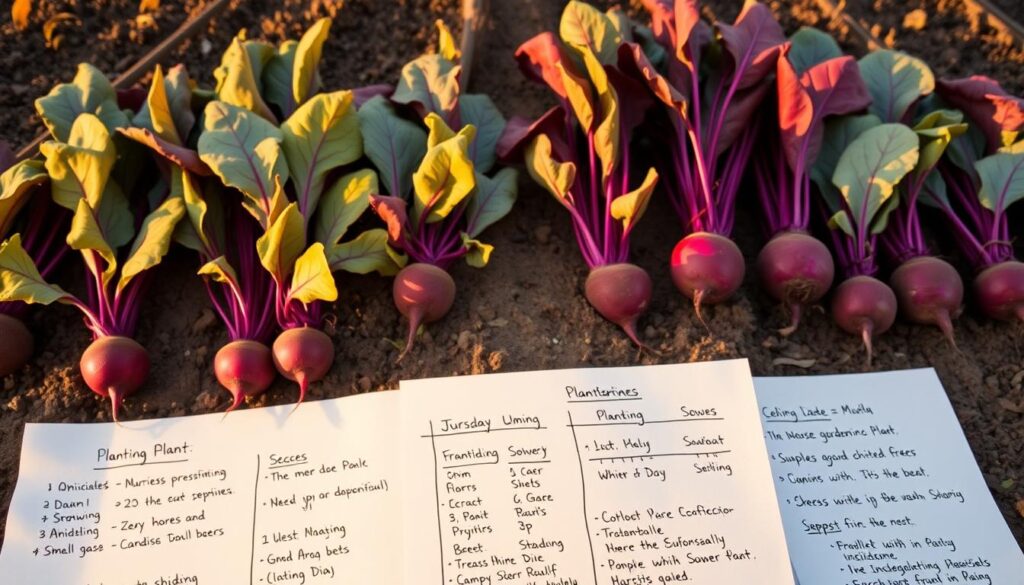
Incorporating Herbs in Your Beet Garden
Creating a diverse garden can greatly enhance your beet growing experience. Including herbs, particularly basil and thyme, offers not only flavor but also protection and support for your beets. When you think about herbal companions for beets, both of these options stand out as natural fits.
Basil: A Flavorful Companion
Basil with beets forms a harmonious relationship that benefits both plants. Basil thrives in similar growing conditions as beets, enjoying warmth and plenty of sunlight. This aromatic herb enhances the flavor of your meals while also working to deter pests that may threaten your beet plants. Having basil close by can make your beet harvest not just productive but flavorful too.
Thyme: Drought-Tolerant and Useful
Thyme as a beet companion provides excellent drought resistance, which is a valuable trait in maintaining soil health. Its ability to cover the soil can prevent it from drying out quickly, ensuring a steady supply of moisture for your developing beets. Moreover, thyme’s pleasant aroma helps to ward off unwanted pests, making it one of the ideal herbaceous beneficial plants in your garden.

Succession Planting with Beets and Companions
Succession planting can greatly enhance the yield of your beet garden. This approach offers several advantages of succession planting, allowing you to reap the benefits of multiple harvests throughout the growing season. Implementing crop rotation techniques in conjunction with this method helps to maintain soil health, ensuring that your beets thrive year after year.
Benefits of Succession Planting
One of the primary benefits of succession planting is the improved efficiency of space and time. You can stagger your sowing schedules, which keeps your garden productive without delays between harvests. This technique not only maximizes crop output but also allows for the incorporation of various beet planting strategies. Consider pairing beets with faster-growing companions to ensure a consistent and varied harvest throughout the season.
How to Plan a Beet Succession Schedule
Planning succession for beets requires careful consideration of planting intervals. Start by sowing seeds every three weeks, allowing for a continuous supply. Think about mixing in companion plants with different maturation rates. By doing this, you will create a dynamic growing environment. Make sure to monitor your beets and adjust the timing to achieve optimal results according to your local climate and soil conditions.
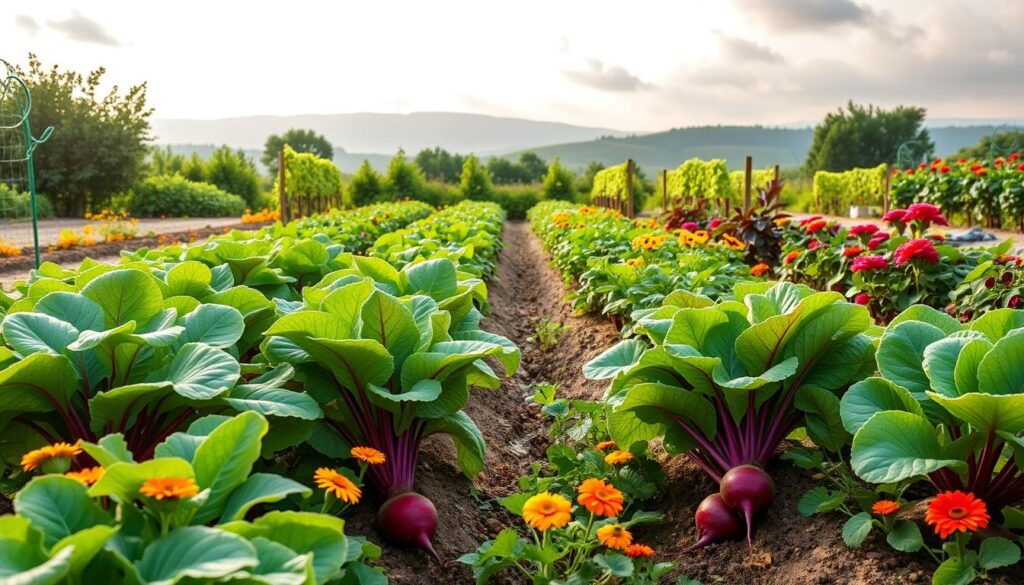
Harvesting Tips for Beets and Companion Plants
Understanding the right time for harvesting beets is crucial for achieving optimal flavor and texture. To know when to pick beets, keep track of their growth. Typically, beets are ready for harvesting 50-70 days after planting. An easy method to check their readiness is by gently digging around them and assessing their size. A diameter of 1-3 inches usually indicates that they are mature enough for a flavorful harvest.
When to Harvest Beets
When it comes to harvesting beets, timing is key. They should be pulled once they reach their desired diameter, but ensure you monitor their growth closely. If you let them grow too large, the texture will become woody and less enjoyable. Remember that beets can be harvested at different stages; the younger ones can be sweeter and more tender, while the mature ones offer a more robust flavor.
Coordinating Harvest Times with Companions
Coordinating harvests in the garden can significantly enhance your gardening efficiency. Be sure to pay attention to companion harvest timing. Picking your beets right on schedule not only benefits the flavor of the beets but also ensures that nearby plants have enough space and nutrients to continue thriving. Some companion plants may share similar harvesting timelines, making it easier for you to plan and optimize your garden efforts.

Experimenting with Other Companion Combinations
Engaging in experimenting with companion planting opens the door to numerous creative companion plant pairings. While traditional choices play a significant role, exploring unconventional companions can bring unexpected benefits to your garden. New combinations may boost growth, enhance flavors, or even deter pests more effectively.
Unconventional Companions to Try
Consider pairing beets with some unique options that you might not typically associate with them. For instance, planting beets alongside brassicas such as kale or cabbage can lead to fruitful outcomes. Some gardeners have reported success jumping outside the norm with culinary herbs like oregano and dill, which can provide aromatic benefits and repel certain pests.
Observations from Fellow Gardeners
Gleaning insights from fellow gardeners further enriches your gardening journey. Acts of sharing gardening experiences, whether successes or mishaps, can guide your choices when experimenting with companion planting. Many have touted the advantages of unconventional pairings that initially seemed counterintuitive but yielded impressive results. Embrace the knowledge derived from these shared gardening experiences and adapt them in your path towards a thriving garden.

Resources for Further Learning
If you’re looking to enhance your understanding of companion planting, a variety of resources are available to you. Engaging with companion planting literature can provide valuable insights into the best practices for optimizing plant relationships in your garden. Consider exploring some recommended titles that delve into the intricacies of pairing plants effectively, ensuring that you get the most out of your garden space.
Books on Companion Planting
Gardening book recommendations abound, focusing on companion planting. Titles such as “Carrots Love Tomatoes” by Louise Riotte and “The Vegetable Gardener’s Bible” by Edward C. Smith feature guidance on creating harmonious plant combinations that thrive together. These resources not only yield practical solutions but also inspire thoughtful gardening practices.
Online Gardening Communities to Join
Joining gardening forums and online gardening support groups can further enrich your gardening journey. These vibrant communities offer a platform for you to connect with fellow garden enthusiasts, share experiences, and seek advice on various challenges. By participating in these discussions, you’ll gain wisdom from others and discover tips that may not be found in books alone, greatly enhancing your companion planting efforts.



